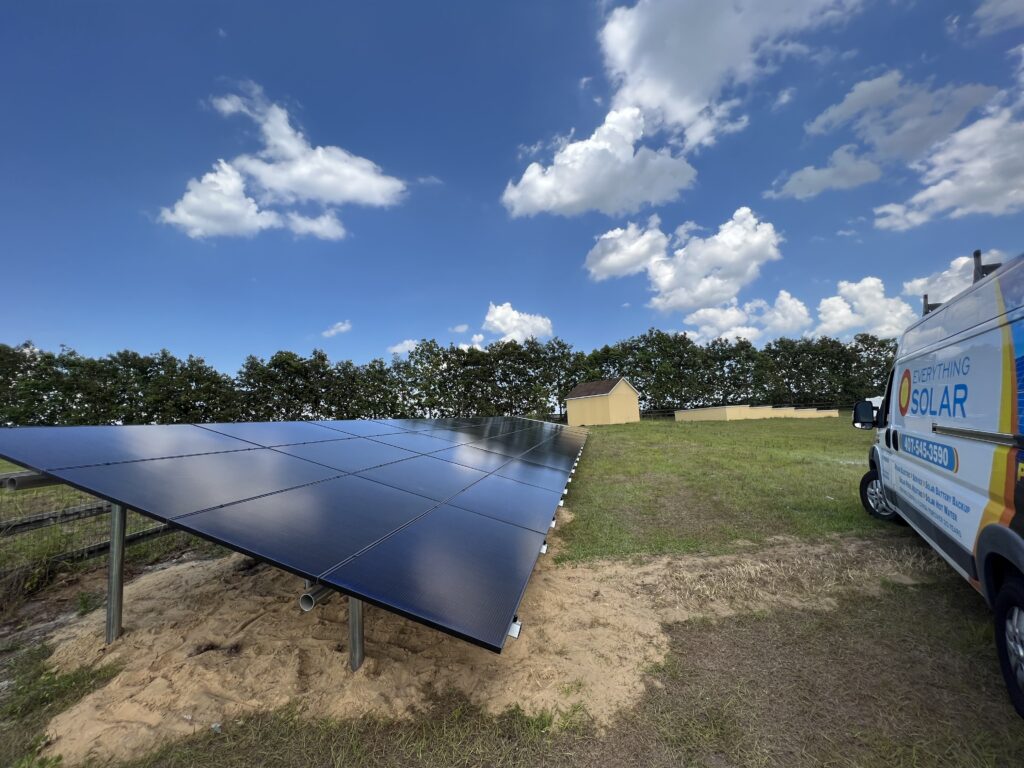The increase in solar capacity installed by the state during the first six-month period was greater than the total amount ever installed over an entire year.
Sunshine State finally realizes its solar energy generation potential
Florida, which topped the list of solar installers in the United States during the first half of 2023, is now on course to surpass California and Texas as the leading solar installers for 2021 and 2022.
Wood Mackenzie, a global energy analytics company, and the Solar Energy Industries Association released the latest Solar Market Insight Report on Thursday.
Florida’s solar power capacity increased by 2,499 megawatts during the first six months of this year. This is far more than the 1,648 megawatts added by California or the 1,292 Megawatts added by Texas.
A SEIA press release said that Florida’s solar capacity installed during the first six-month period exceeded all previous installations in Florida for an entire year.
This will contribute to the United States achieving a record of 32 gigawatts (a gigawatt equals 1,000 megawatts) in new solar capacity by 2023. According to the press release, this is a 52% rise over 2022. It’s also a record-breaking year for the United States.

Wood Mackenzie predicts that the total operating solar power in the U.S. will increase from 153GW today to approximately 375GW by 2028.
According to the U.S. Energy Information Administration, the United States had 1,171GW of total electricity production capacity in June, including fossil fuels. Three hundred and eighty-six GW of that total came from renewable sources. Florida, the country’s third-most populous state, has a 69 GW generating capacity. Of that, 8.6 GW came from renewable sources.
The report attributes this year’s increase to easing COVID-19 supply chain challenges and restrictive trade policies, which slowed down growth in 2022. The report also said that incentives adopted under the Inflation Reduction Act were helping.
The news release says that new domestic manufacturing investments will improve the supply situation over the next few year. The release stated that if these factory announcements are realized, the U.S. solar module production will be 10x greater by 2026 than it is now.
Florida’s solar power generation capacity increase was mostly due to utility-scale growth. 2159 MW of the 2,499MW added to grid were installed by utilities.
Florida Power & Light owns 1,769 MW, followed by Duke Energy with 389 MW.
Florida’s residential solar power is also increasing. The residential property owners in Florida added 332 MW solar capacity in the first half of the year, the second most in the U.S.
The U.S. Energy Information Administration has compiled data showing Florida residents have installed rooftop solar panels rapidly in the last two years.
EIA data show that the number of customers participating in net metering arrangements with utilities has doubled from June 2021 to June 2023, going up from 87.975 to 182.239.
FPL also surpassed Duke Energy in terms of net metering over two years.
FPL and Duke both had more than 40,191 rooftop solar customers in June 2021.
Duke had 75,264 net metering clients compared to FPL’s 80,552 two years later.
FPL customers who use net metering sold 38,814 Megawatt Hours of electricity back in June 20,23. This is 166% more than what they sold in June 2021.

The company has aggressively expanded its utility-scale solar energy capacity for several years. FPL announced that it would increase its solar power generation capacity by 50,000 MW in June 2022 as part of a plan to eliminate carbon dioxide emissions by 2045.
Months earlier, however, the utility had helped draft legislation that would gradually reduce the “buy-back rate” for customers who sold surplus power generated by their solar panels. The utility claimed that forcing customers without rooftop solar panels to pay retail prices for excess electricity is unfair.
The legislation that FPL favored passed, but Gov. Ron DeSantis, citing a desire to not add to Floridians’ financial burden in a year when prices rise, vetoed the bill.
Florencia Olivea, FPL’s spokeswoman, said: “We remain just as committed as ever to consistently deliver low-cost and reliable energy to all of our customers.” FPL’s large solar fleet, one of the biggest in the country, allows us to achieve this. FPL’s solar centers will save customers $375,000,000 in fuel costs by 2022, despite the global spike in natural gas.
According to EIA, nationwide, the number net metering clients increased by 42.5% between June 2021 to June 2023. The number of megawatts sold back to the grid also increased by 27.9% from 154.451 MWh up to 197.535 MWh.
